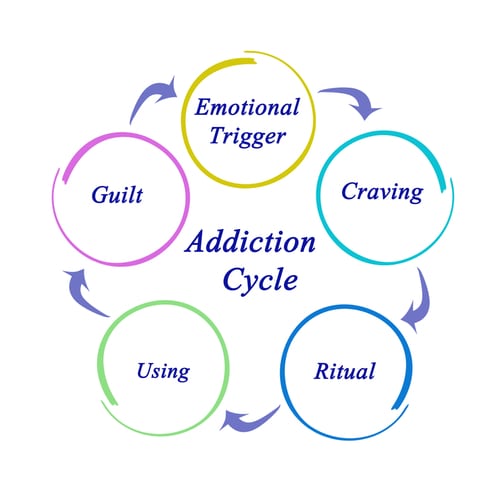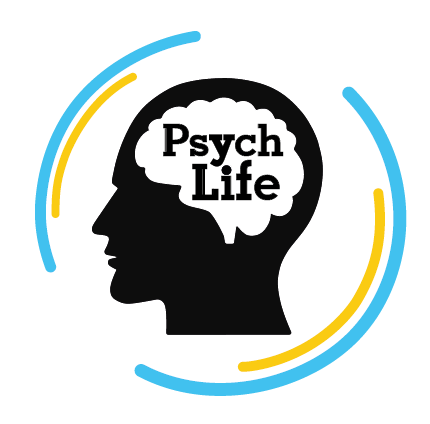The Difference Between Addiction and Dependence
- By admin
- June 7, 2020
- 6:15 pm
An accident-prone social worker relates her experience of opioid dependence and withdrawal—and why it wasn’t addiction
By Abigail Strubel, MA, LCSW, CASAC
I’m a klutz, an exceptionally injury-prone person. But I’ve never broken a bone. Instead, I sprain, twist, and stretch out my ligaments and tendons. I sprained both ankles within a week when I was 17, and I’ve sprained each at least twice again. I’ve also had problems with my neck, shoulder, back, and half my pelvis, which I sprained slipping on a wet floor.
In 2006, I overworked out with a personal trainer and damaged both of my knees. Not enough to warrant surgery, but badly enough to curse me with recurrent pain that continues to this day. I went from doctor to surgeon, chiropractor to acupuncturist, physical therapist to pain management specialist, and found only partial relief. At times I relied on painkillers to make it through the day. Percocet, to be precise.
For years after my knee disaster, I only took a painkiller when I was in dire agony. Although I’d noted its mood-elevating properties, I never thought about taking Percocet for fun or relaxation, or to reduce anxiety. I tend to reach for ice cream or something frosted when I’m upset. (Which might be another addiction, but a slightly less perilous one.)
Usually I only needed pain relief intermittently, but then I had a bad run. More than a week of Percocet every day, sometimes twice a day, just to function.
I tried to be tough. I always waited for the pain to emerge emphatically before reaching for a pill. One Saturday the pain just wasn’t there, and in relief, I went about the day pain-free and pill-free.

Short-lived relief gives way to a miserable night
Saturday night was another story. First came nausea. Mentally reviewing what I’d eaten that day, I was stumped. No fish, old leftovers, or anything else that I could reasonably expect to nauseate me.
Then, around 11 pm, I bolted to the bathroom, sat down, and forcefully expelled what felt like a gallon of pure water. It was the start of a long vigil. About every hour, I staggered back to the bathroom to expel more fluids.
The human body is about 60% water, but I was still amazed at the sheer volume I was discharging. Around 3 or 4 a.m., hunching miserably on the toilet again, I thought, “This is withdrawal. This is what my clients deal with.”
I’m a clinical social worker. At the time I worked in a methadone program with recovering heroin users. I’d studied the symptoms of withdrawal in school, I’d listened to my clients describe it. Now I was living it.
Somehow I made it through the night, and on Sunday, still nauseated, I met my friends for brunch—to celebrate my birthday. I drank a lot of water and managed to push some pancakes around my plate without vomiting, then surprised everyone by declining dessert (my circle is well familiar with my love of frosting).
“Why aren’t you eating?” asked my friend Jeff. I described my activities of the prior night.
“So why didn’t you just take a pill?” Jeff asked, incredulous.
Excellent question. It hadn’t even occurred to me. If I wasn’t in pain, I didn’t need or want to take a pill. Even when I was in withdrawal.

Physical dependence is not addiction
That is the difference between addiction and mere physical dependence. My body was moderately used to the wide-ranging effects of the Percocet, not just the pain relief. But emotionally, I didn’t crave the mild euphoria, and physically, my withdrawal symptoms weren’t that agonizing. After a few uncomfortable day, I went back to a more or less comfortable normal.
Not everyone is that lucky. Many opioid users will never experience an end to their pain; they have become so physically dependent that withdrawal is unending agony. Others depend on the relief they find from their anxiety or depression or rage—most often the legacy of trauma. In all the years I worked in the methadone program, I didn’t meet a single client who wasn’t a survivor of severe trauma.
As unpleasant as my withdrawal was—crapping what felt like gallons of water every hour on the hour—it was relatively brief and mild. After a few more shaky days, it was easy for me to walk away from opioids. For many it’s not just difficult, it’s impossible—especially without access to medication-assisted treatment.
Physical therapy brought my knee pain to manageable levels—without opioid painkillers. Still, in the midst of the opioid addiction crisis, I worry about others who suffer from severe chronic pain and are having ever more difficulty obtaining relief, since new prescribing guidelines are reducing the number of opioid prescriptions written.
And I hope that the millions of Americans struggling with opioid use can find the help they need—medication and therapy. The stigma of medication-assisted treatment, especially methadone, is significant. But some people, once conditioned to opioids, may never be fully comfortable without them.
Like any medication, methadone can be abused. But when used as prescribed, it can enable people to work, go to school, take care of their families, and enjoy life without undue euphoria, numbness, or withdrawal. People with opioid addiction can recover, and they should have ready access to the medications that enable recovery.
Abigail Strubel is a Columbia-educated clinical social worker. She uses light therapy to cope with her seasonal affective disorder, and also manages chronic insomnia through acupressure and good sleep hygiene. She has worked with homeless veterans, returning citizens on parole, recovering heroin users, and other interesting populations. Her articles fuse humor with practical insights about mood, sleep, and mental health.
